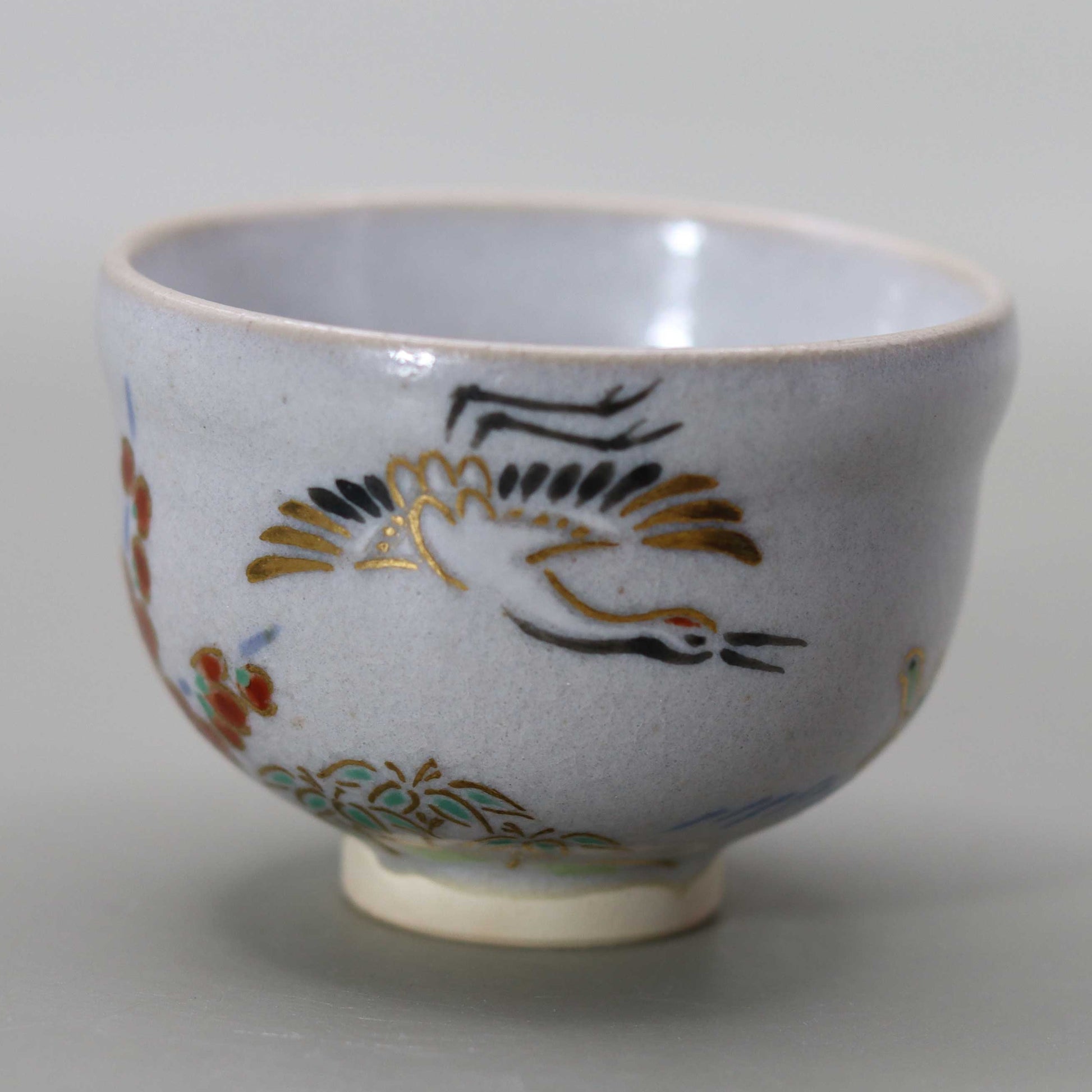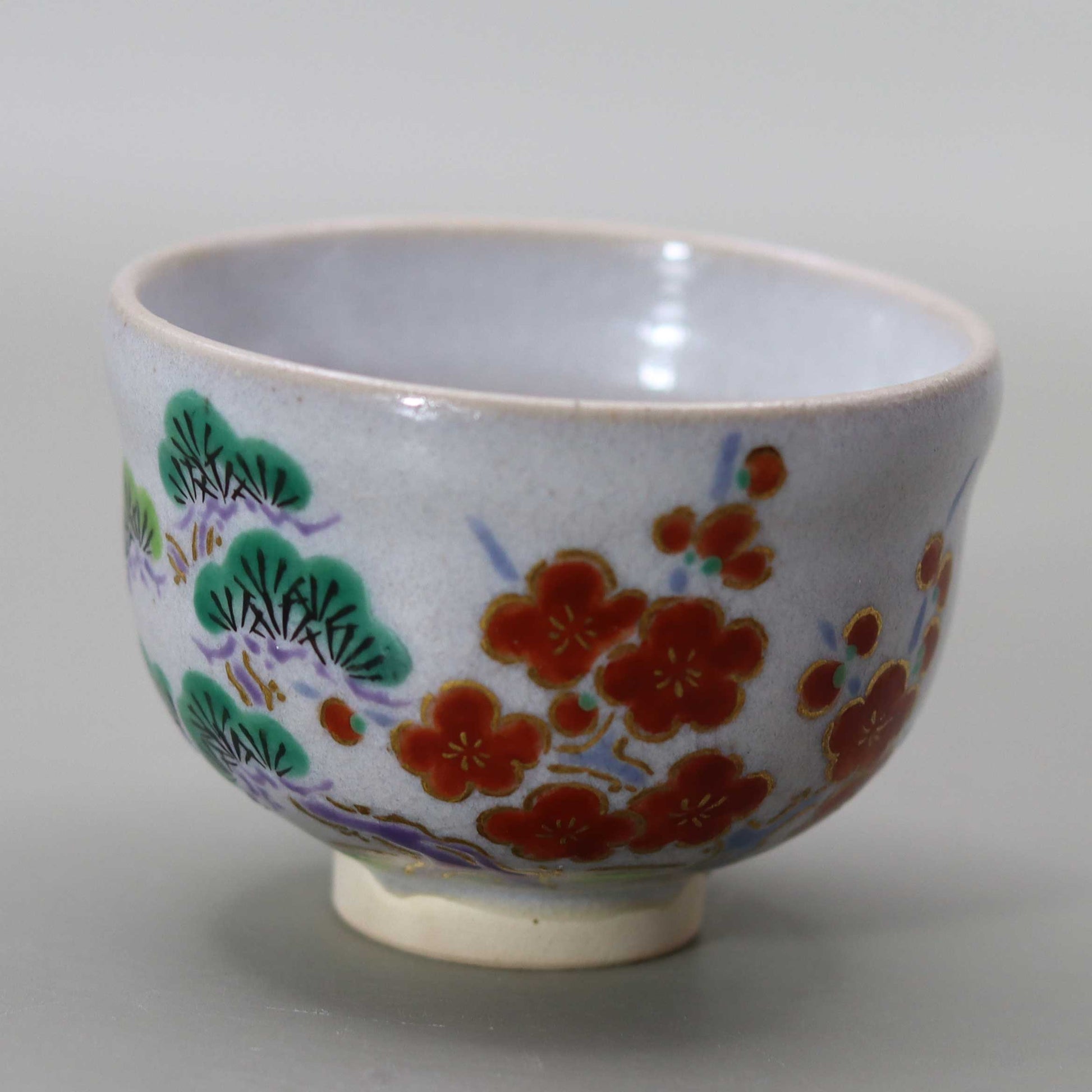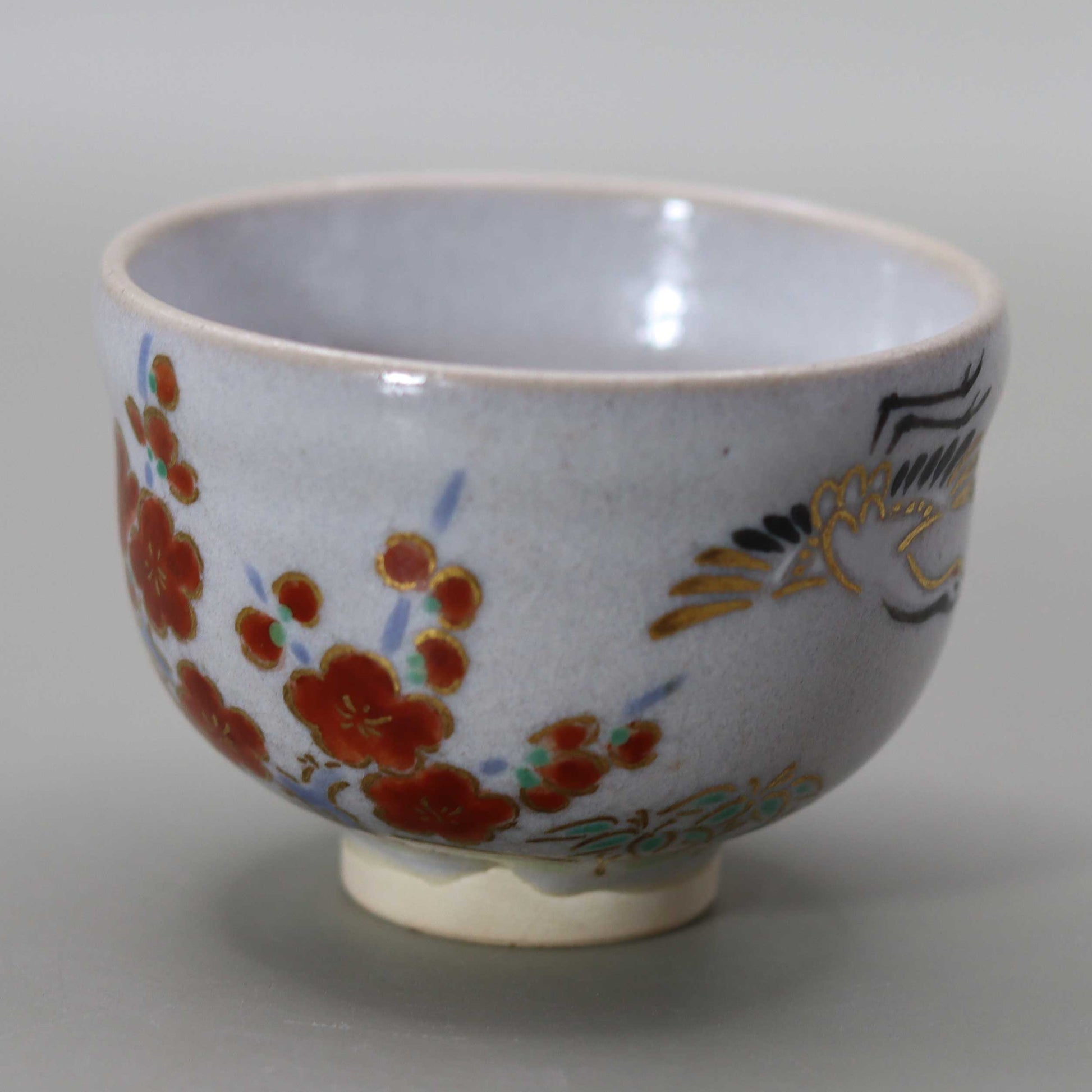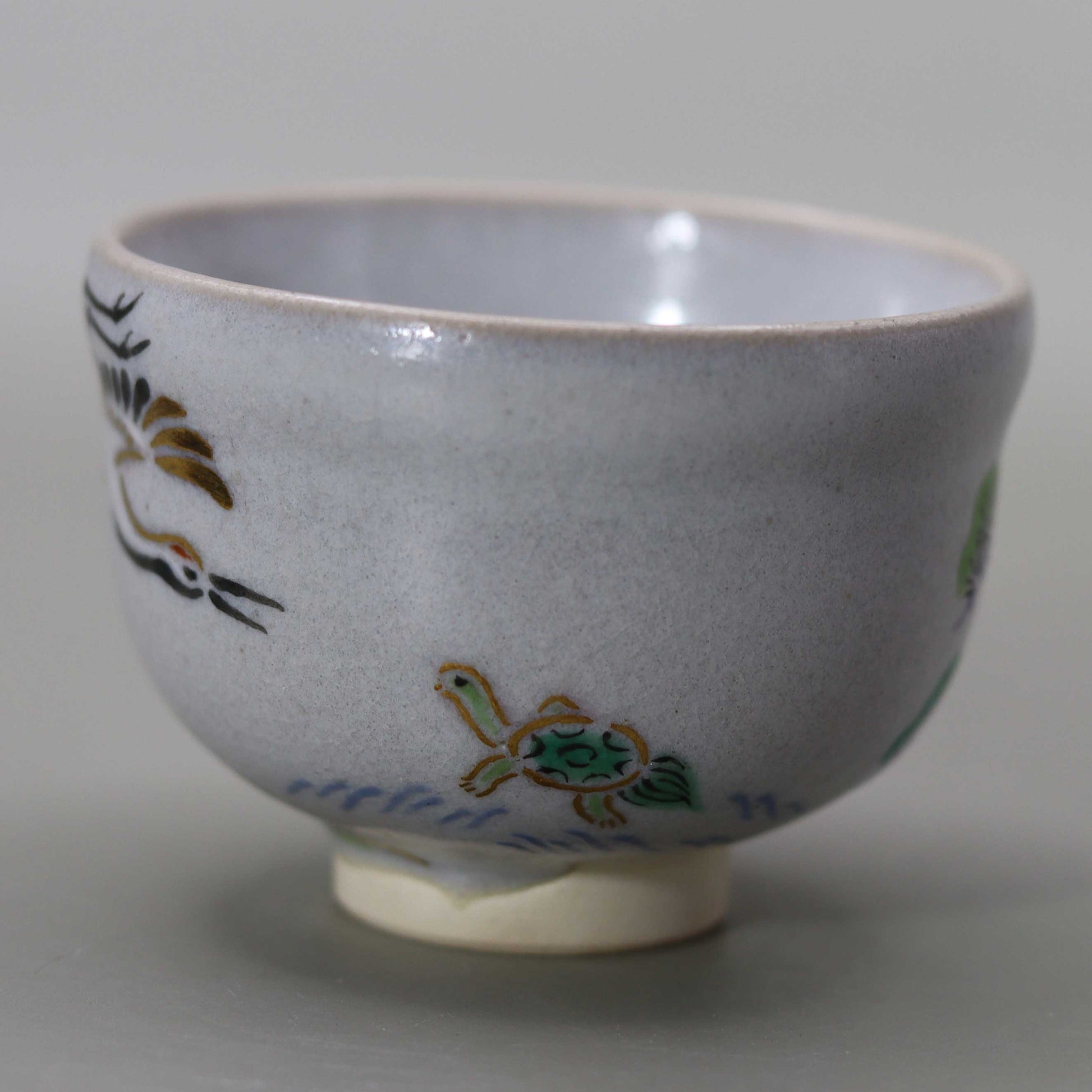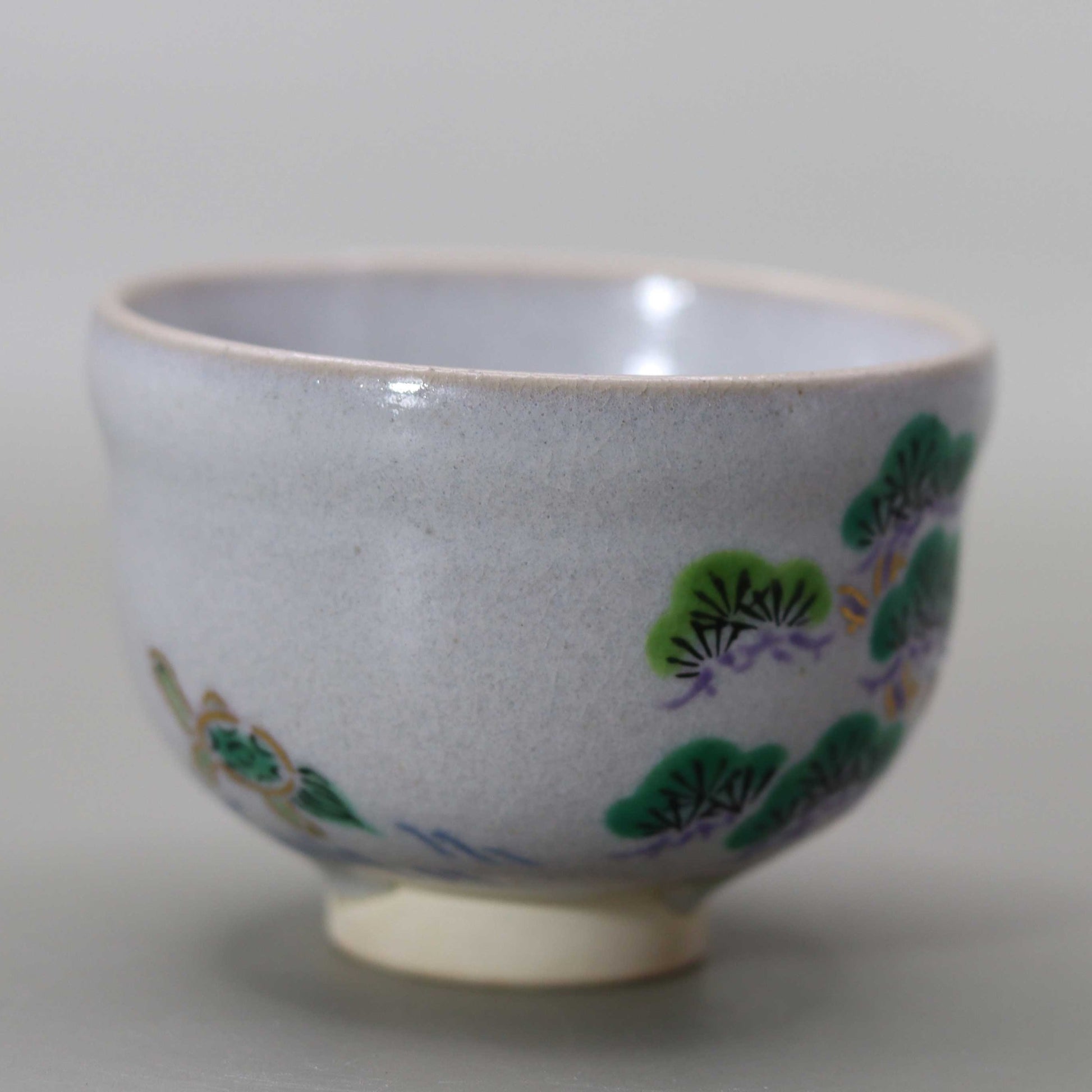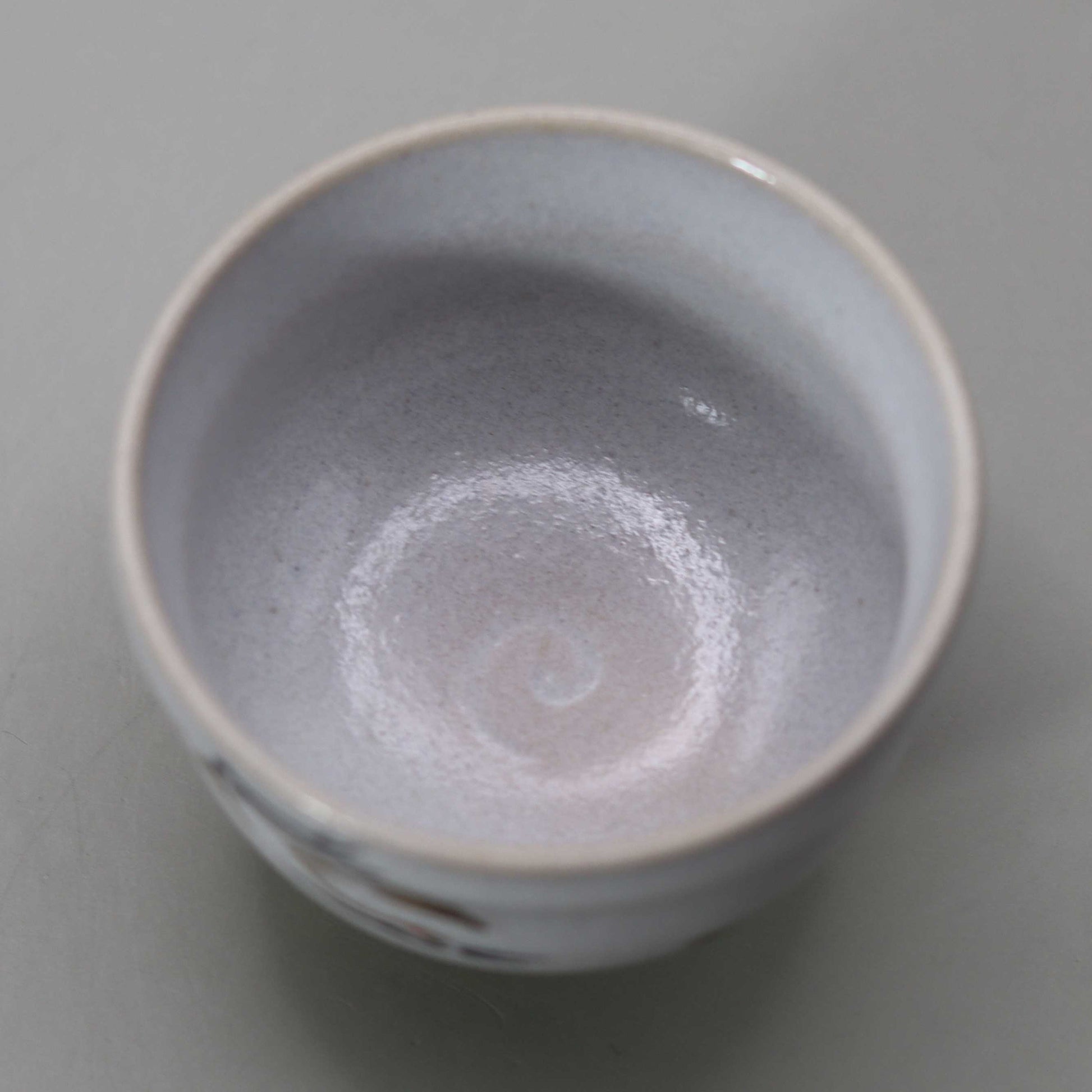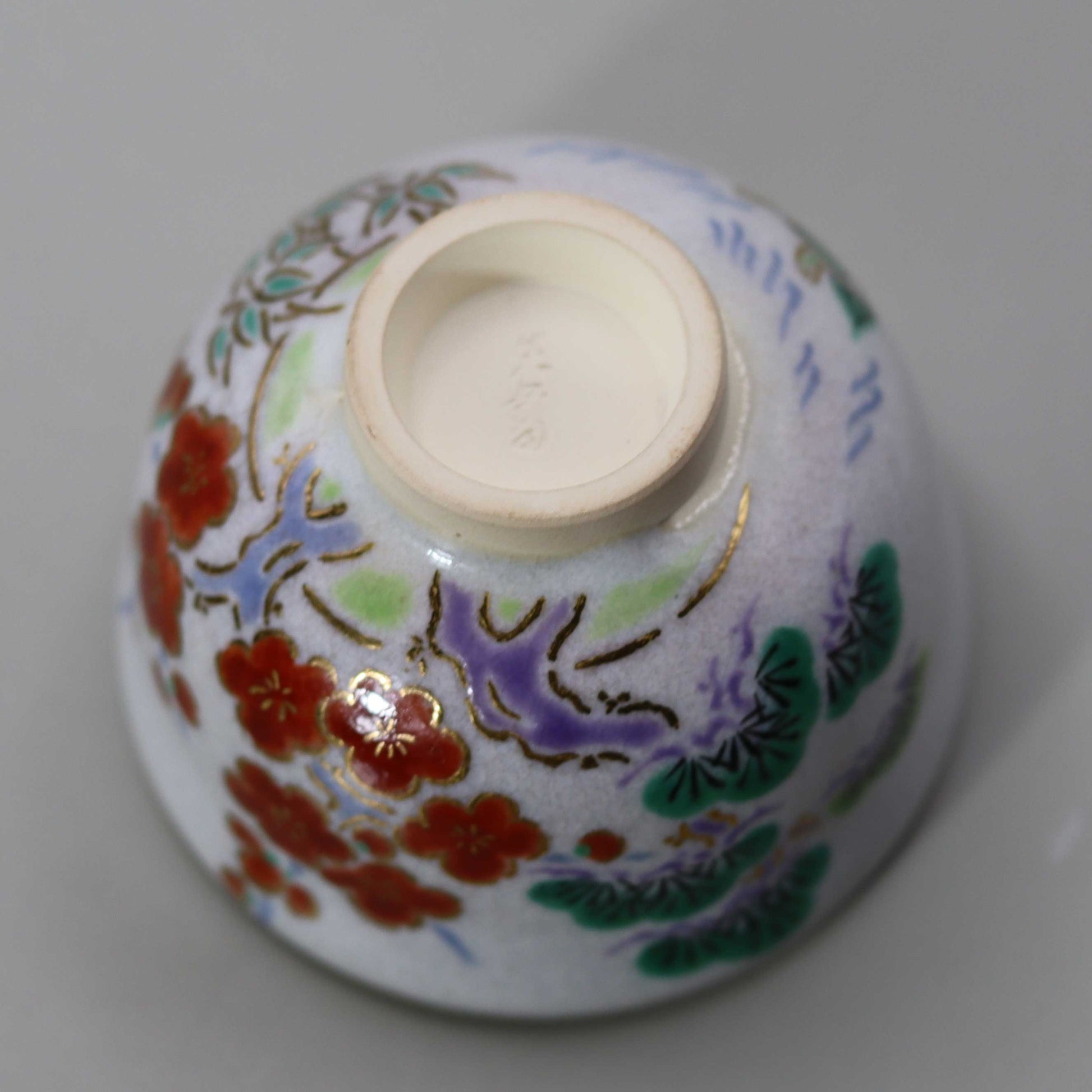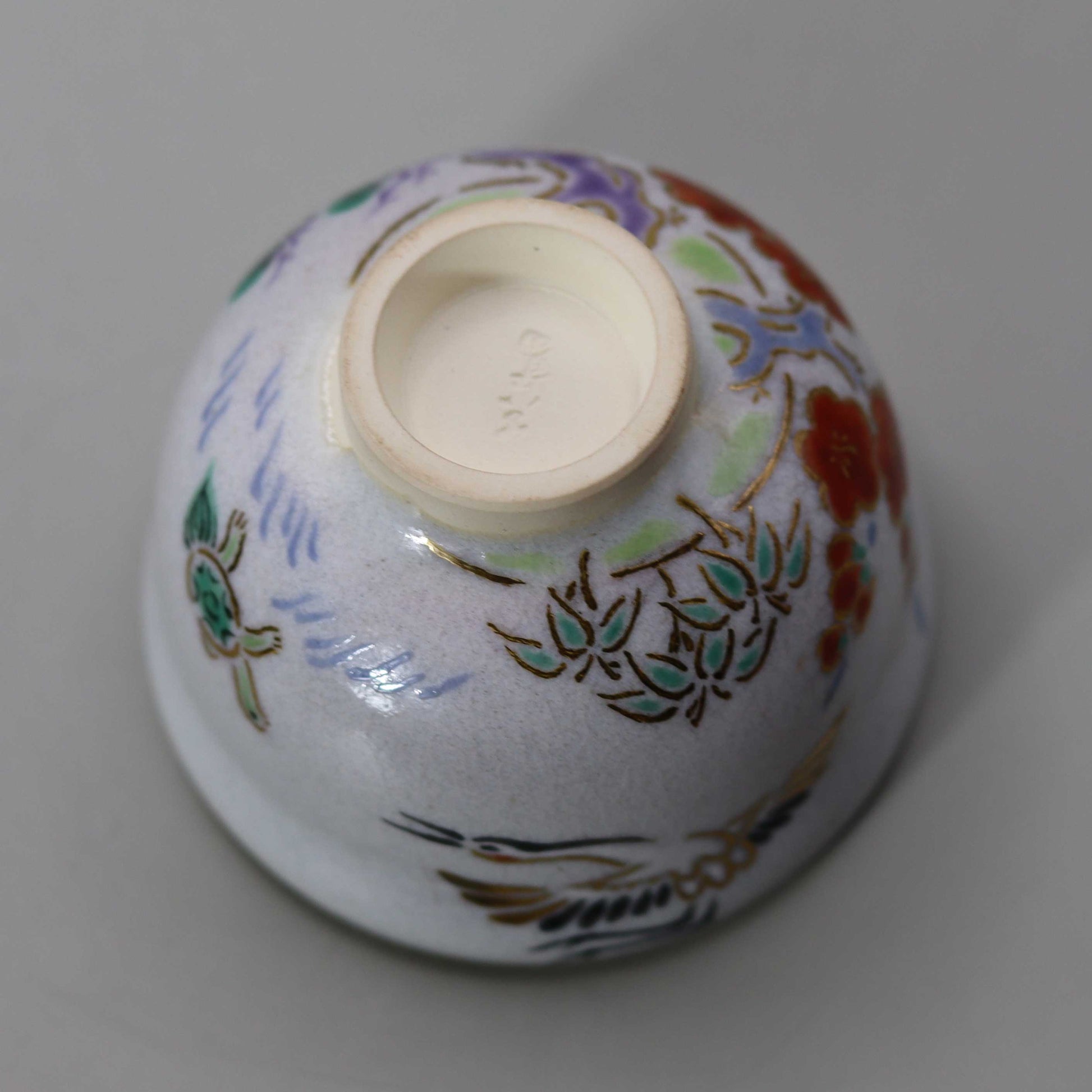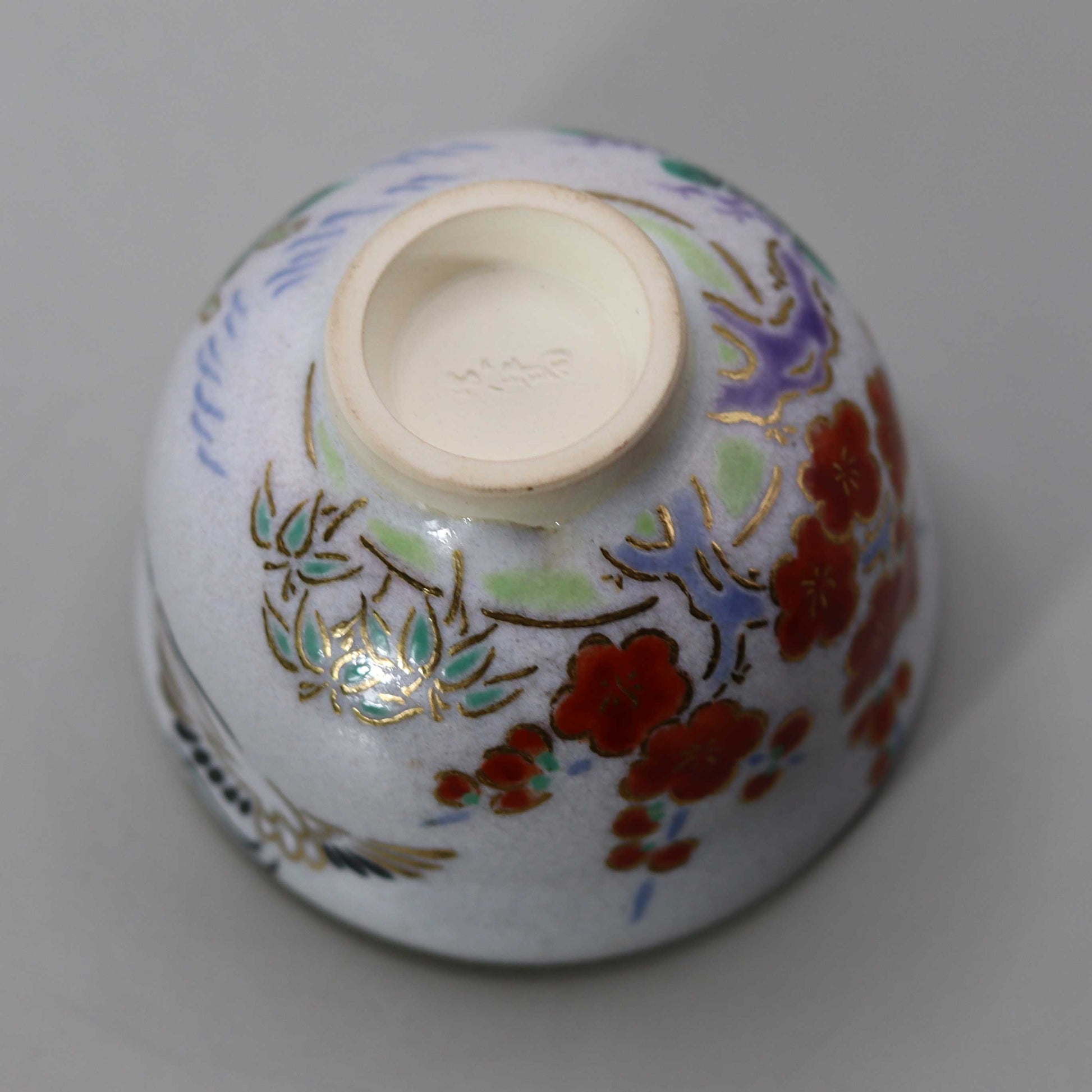Penglai Mountain Cup by Kosai Miyagawa
Penglai Mountain Cup by Kosai Miyagawa
Couldn't load pickup availability
Height: 4.0cm Width: 6.0cm
The Straw Ash Glazed Mount Horai Sake Cup features a beautiful design based on the legend of Mount Horai, and is particularly notable for its intricate painting. The surface of the vessel is intricately painted with auspicious animals and plants, such as cranes, plum blossoms, pine trees, and turtles. These have all been motifs that have symbolized longevity, prosperity, and happiness since ancient times, and were cleverly chosen to express the utopia of Mount Horai. Combining the soft texture of the straw ash glaze with the rich symbolism of the natural world, this cup embodies graceful beauty both visually and tactilely.
Mount Horai and its legends
Mount Penglai is a legendary mountain based on the ancient Chinese idea of immortality, and is considered an ideal place symbolizing immortality. It is one of the divine realms preached by Taoists (those who practice Taoism) active during the Warring States period (5th to 3rd centuries BC), and is known as one of the three divine mountains floating in the Bohai Bay. The three divine mountains refer to Mount Penglai, Mount Fangzhang, and Mount Yingzhou, all of which were believed to be inhabited by immortals and to contain the elixir of immortality. In ancient China, many kings sought the divine mountains in search of the elixir of immortality, and the story of Emperor Qin Shi Huang dispatching Xu Fu to search for Mount Penglai is particularly famous. The reason why Mount Penglai is particularly famous among these divine realms is that the Taoist Li Shaojun described Mount Penglai in detail during the reign of Emperor Wu of Han. Later, the city of Penglai was built on the coast of the Bohai Sea, and Penglai County was established during the Tang Dynasty. Mount Penglai was frequently sung about in poetry by Tang Dynasty poets, such as Li Bai, Du Fu, Bai Juyi, and Wang Wei, as a symbol of good fortune, wealth, and longevity. In Japan, Mount Penglai has also spread as a symbol of good fortune and longevity, and is not only used as a subject for poetry and paintings, but is also incorporated into garden styles. In this way, Mount Penglai has deep significance as a symbol of utopia and happiness in East Asian art and culture.
Miyagawa Kosai family straw ash glaze
This Horaizan sake cup is made with straw ash glaze, which has been passed down through generations of the Miyagawa Kosai family. Straw ash glaze is a particularly precious glaze in Kyoto ware, and by applying it generously over the entire piece, it creates a soft, warm, slightly bluish surface. This straw ash glaze has been carefully preserved by the heads of the Makkuzu ware family for generations, and gives the pieces a milky, plump, and elegant appearance. This elegance is the greatest feature of Makkuzu ware and is a symbol of the aesthetic sense built up by the successive generations of the Miyagawa family. Even if straw ash glaze is used, the appearance of the piece varies depending on the type of clay and the firing method, and sometimes it can have a warm reddish color or a cool bluish-white color. Miyagawa Chozo, the ancestor of the Miyagawa Kosai family, was an expert in using this glaze, and under his hands it was established as one of the most important techniques in Kyoto ware.
Traditional techniques of Makuzu ware and their inheritance
Makkuzu ware encompasses some of the most outstanding techniques among the traditional techniques of Kyoto ware, and these techniques have been passed down to the present day by the Miyagawa family. In particular, works using straw ash glaze are synonymous with Makkuzu ware. This glaze has been produced by the Miyagawa family for over 200 years, with additions being made to it, which has allowed works to be produced with the same texture across the ages. This "Straw Ash Glazed Horaisan Sake Cup" can be said to be a culmination of the techniques and aesthetic sense of the Miyagawa family, and is a piece that brings together the best of the techniques that have been passed down by generations of craftsmen.
The history and development of the Miyagawa family
The history of Makkuzu ware began in the Jokyo era (1684-1687) of the Edo period, when Yukan Miyagawa Kobei Masakazu moved from Miyagawa Village, Sakata County, Omi Province (present-day Nagahama City, Shiga Prefecture) to Kyoto and made a living as a potter in front of the Chion-in Temple. His children, Jihei and Chobei, each ran a pottery shop called "Rakuya." The fifth generation of the Chobei family was the master craftsman Miyagawa Chozo, who opened a kiln in Higashiyama Makkugahara (present-day Maruyama Park) and built the foundations of Makkuzu ware. Chozo's fourth son, Toranosuke, moved to Yokohama and became the first Makkuzu Kozan, spreading the name of Makkuzu ware both domestically and internationally. Meanwhile, the sixth generation of the Jihei family took the name of the first Miyagawa Kosai, and continued to inherit Makkuzu ware thereafter, and around 1934, the fourth generation, Eiyo Kosai, took the name Makkuzu and began to produce tea utensils in earnest. Currently, the seventh generation of Makatsu, Miyagawa Kosai, is carrying on the techniques and traditions.
Miyagawa family works and their evaluation
Makuzu ware is highly regarded both in Japan and abroad, and is included in many collections. For example, it is held in such renowned institutions as the Victoria and Albert Museum (London), the Permanent Mission of Japan to UNESCO (Paris), and the Japan Foundation, and the Miyagawa Kosai family's works are loved by many fans both in Japan and abroad. Based in Kyoto, the gorgeous and elegant Makuzu ware has been passed down to the present day through the efforts and techniques of the Miyagawa Kosai family, and continues to cultivate new fans while maintaining its traditions. In this way, the straw ash-glazed Horaisan sake cup is a crystallization of tradition, history, and skill, and is a masterpiece that beautifully combines the legend of the ancient immortal realm with modern pottery techniques.
Share
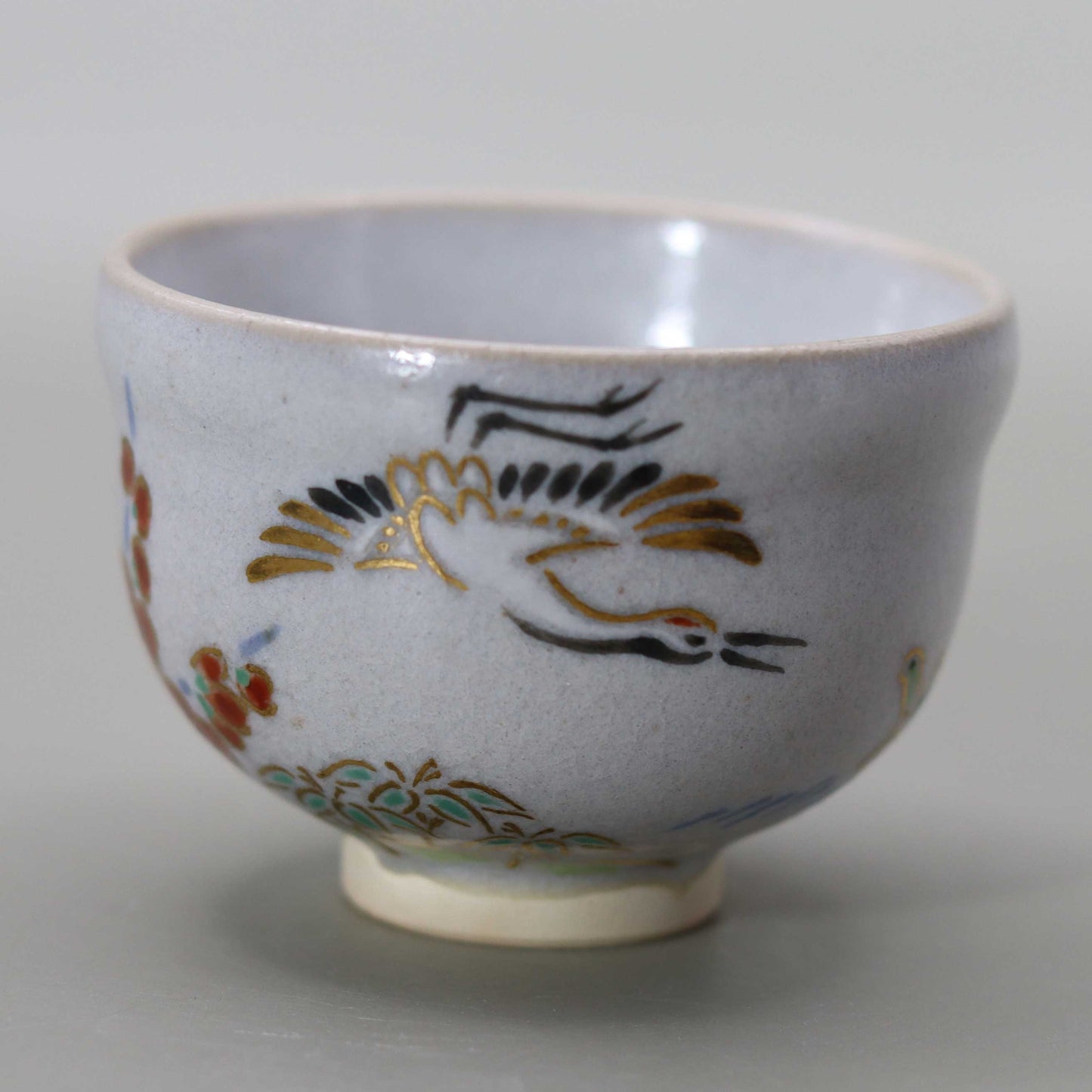
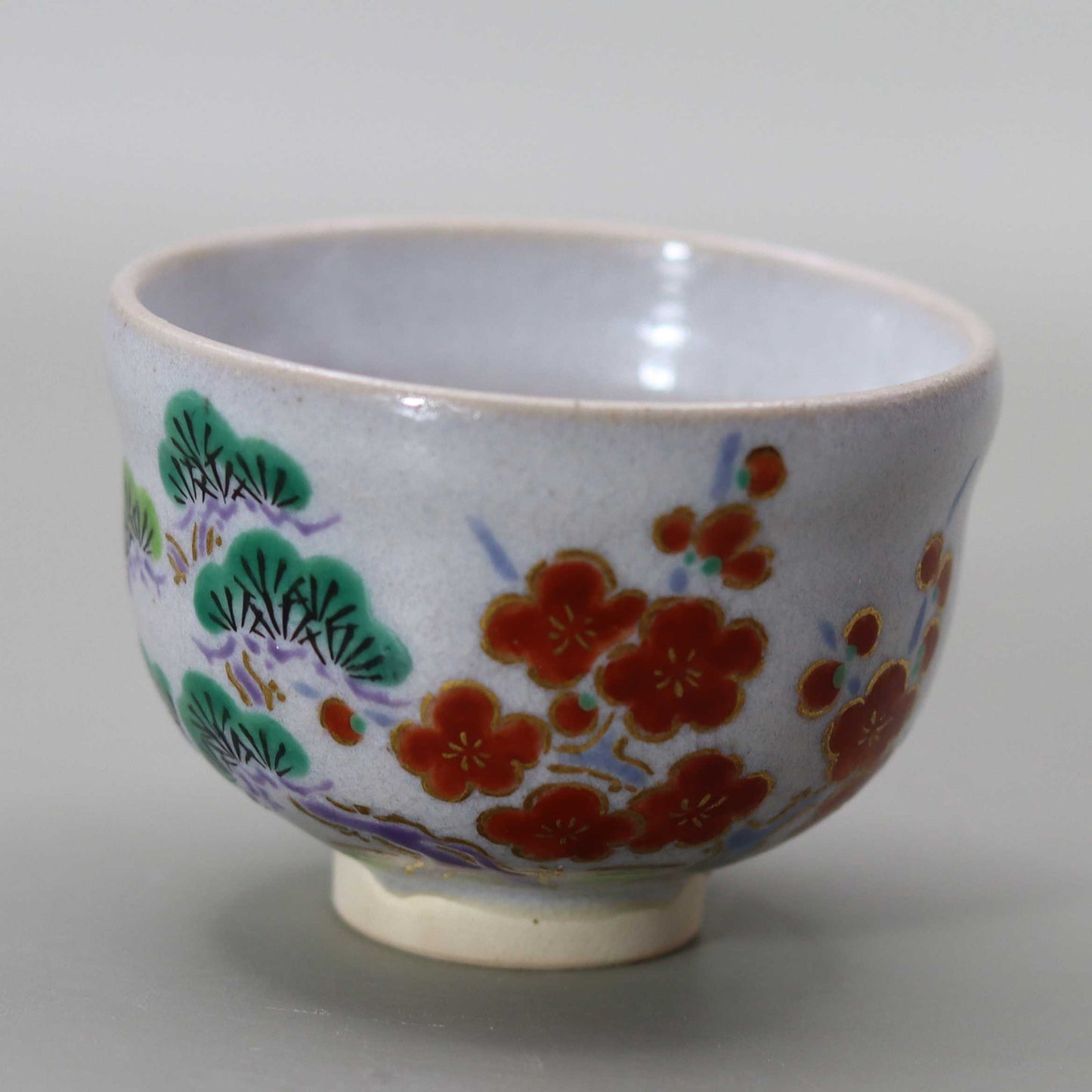

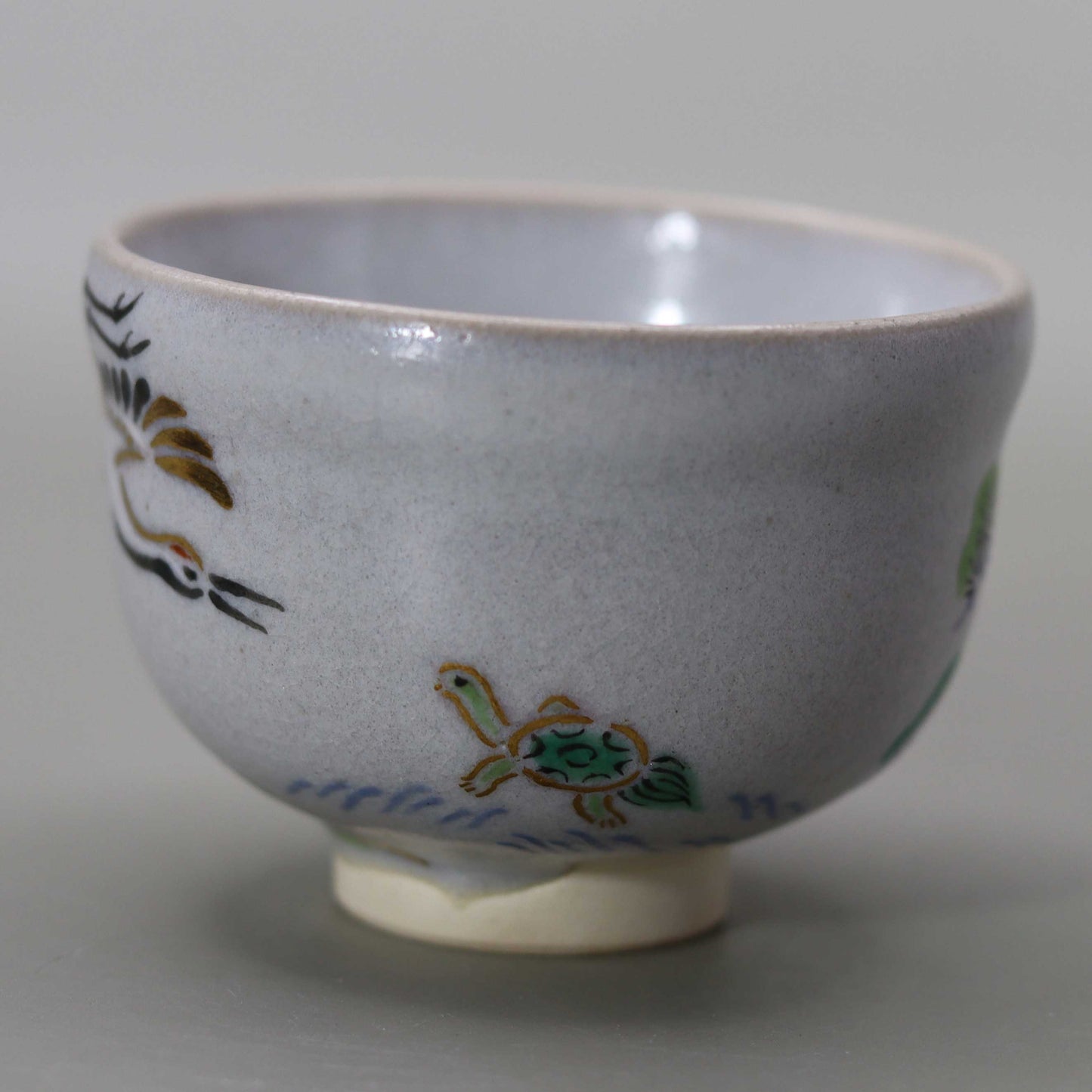

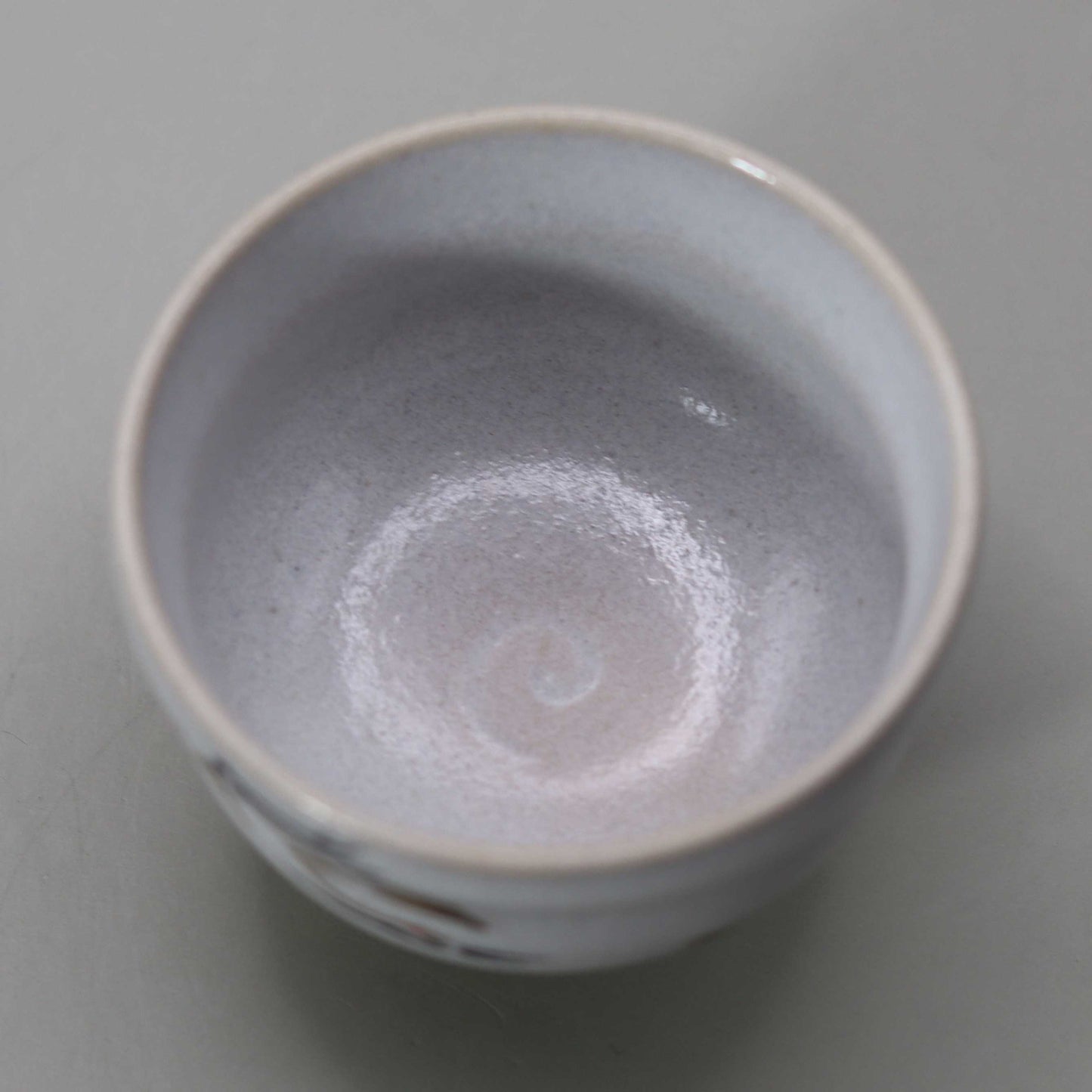

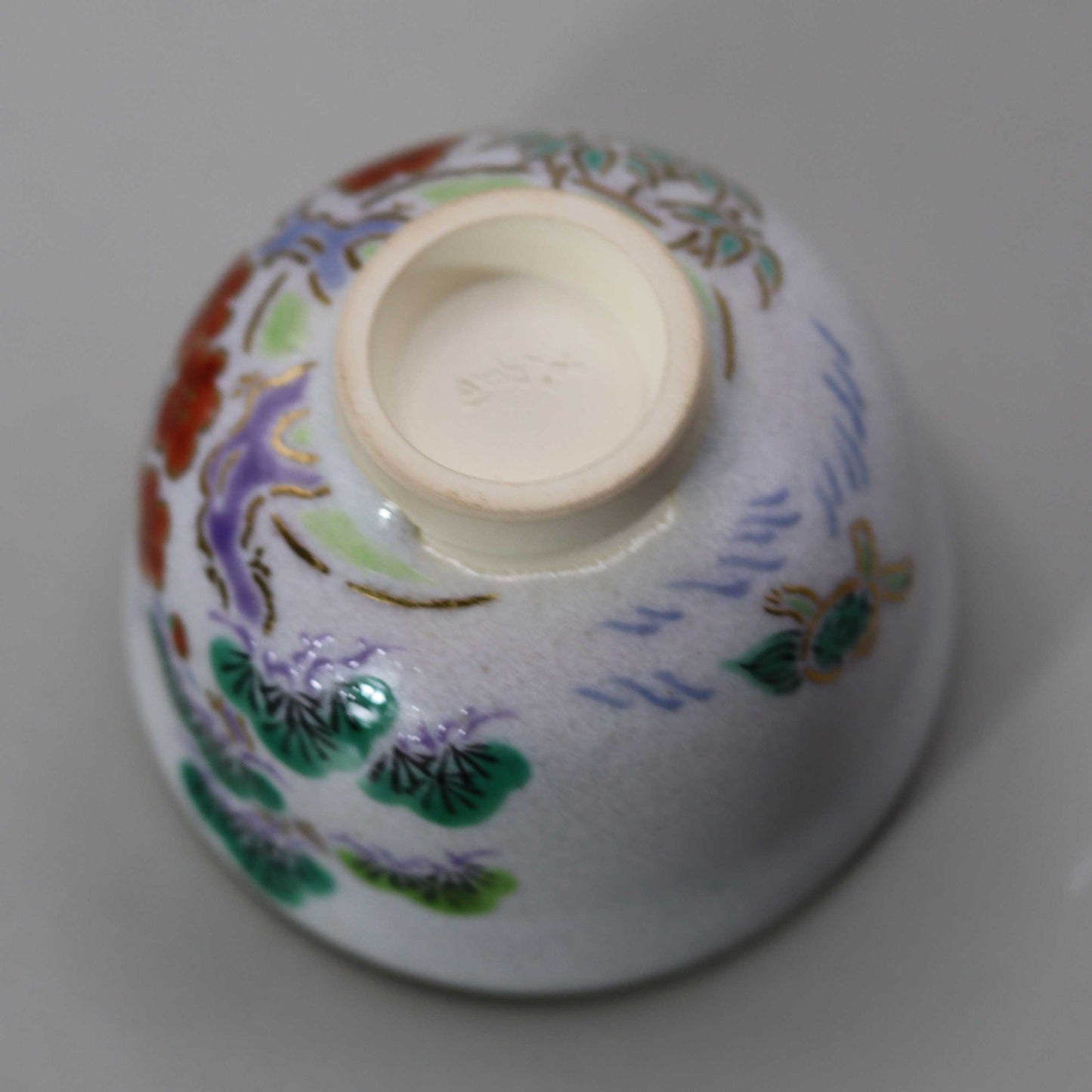


Multi-Column
-
[I will send it to you quickly and carefully]
We carefully package each product in a way that suits it best.
Also, delivery times vary depending on the piece (vessel, etc.).
Items that already come with a box will be shipped within 1-3 days of the order date.
For items that require a box to be made after your order, it will take approximately 30 days for production to be completed and then shipped.
In either case, once we have confirmed your order, we will contact you by email to inform you of the delivery date.
-
[Requests when purchasing pottery]
Even products that look the same may differ slightly in color, shape, size, etc.
The way the glaze is used, the power of the kiln, the firing method, the season, and the humidity also affect the appearance of the pottery.
Please understand the individuality of each piece of pottery and enjoy the unique warmth of handmade.

